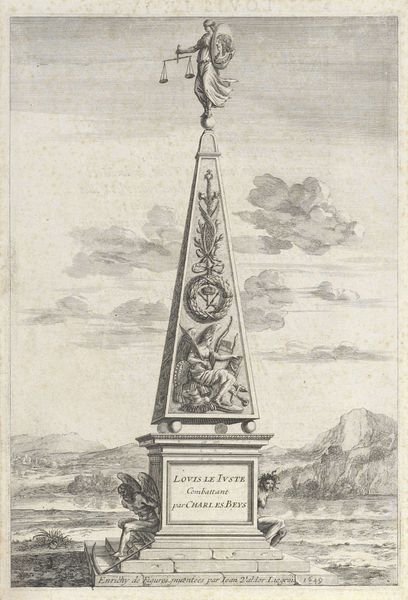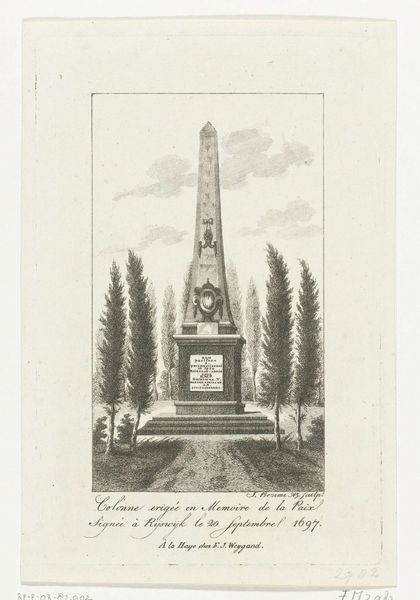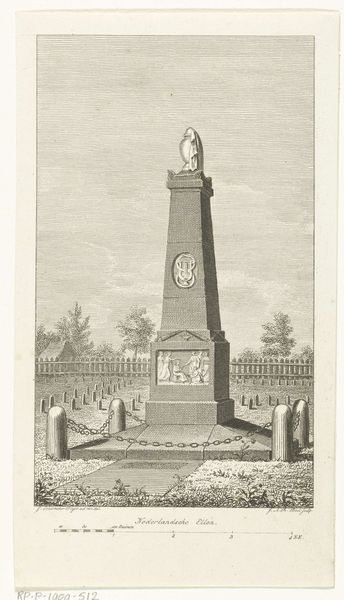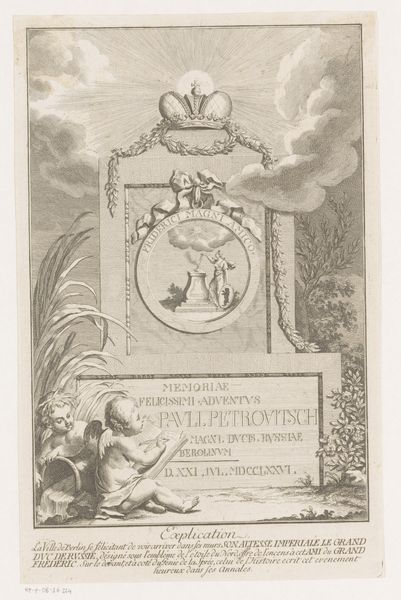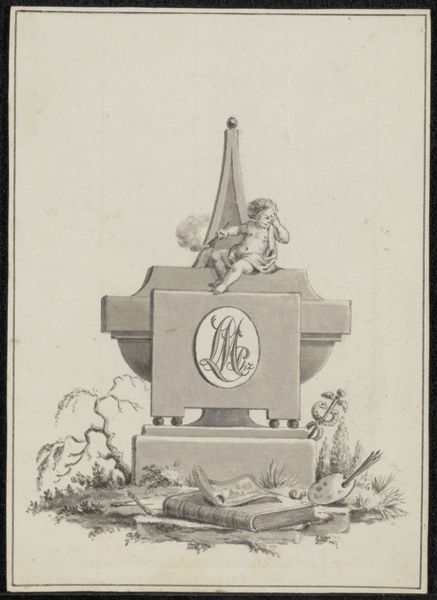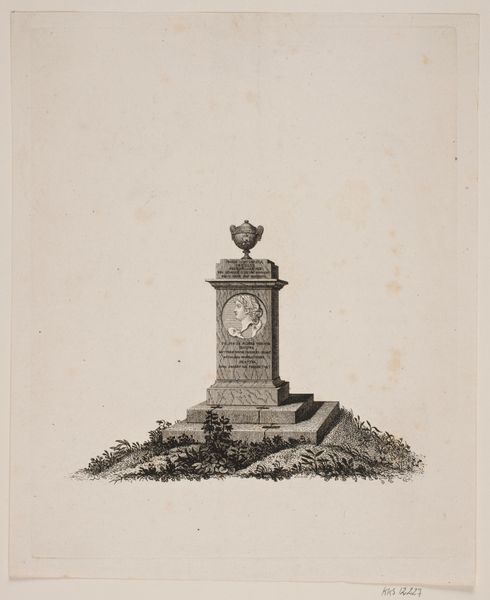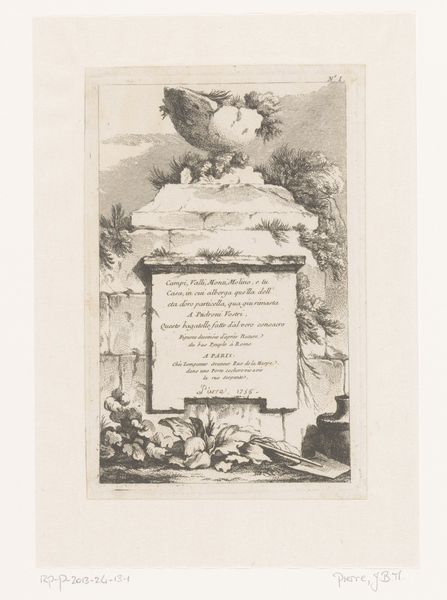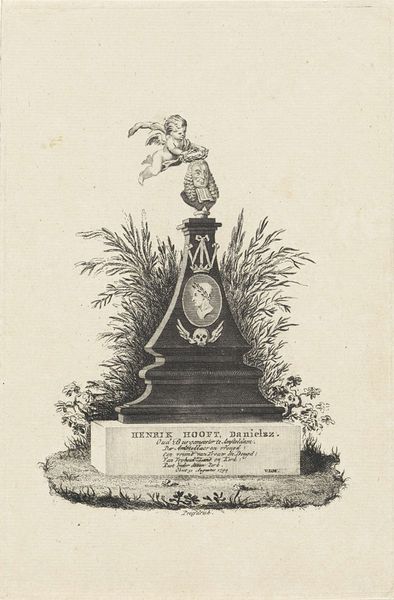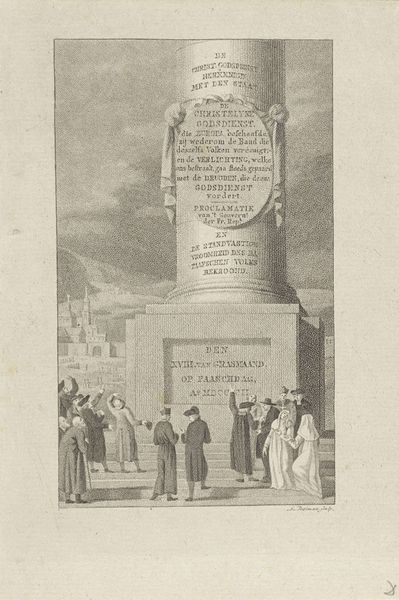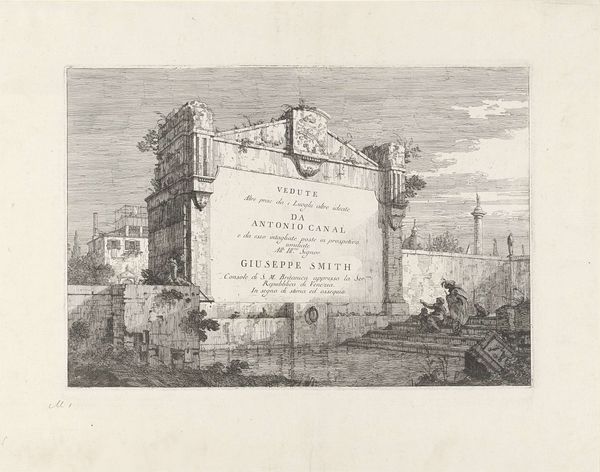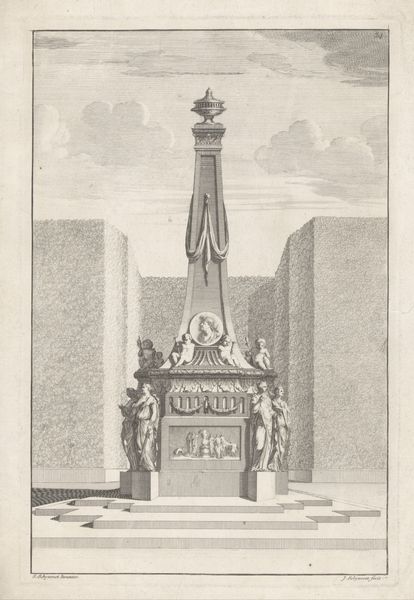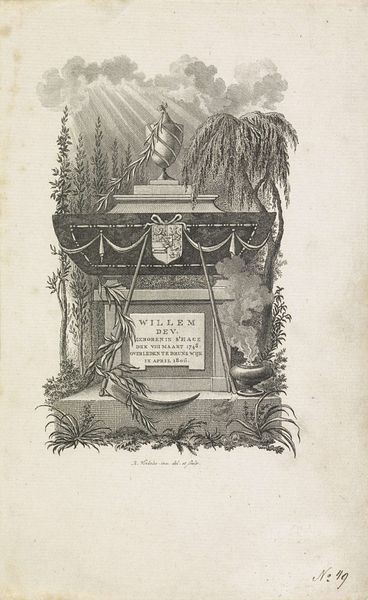
drawing, print, etching, engraving
#
drawing
#
allegory
#
neoclassicism
# print
#
etching
#
old engraving style
#
vanitas
#
history-painting
#
engraving
Dimensions: height 108 mm, width 125 mm
Copyright: Rijks Museum: Open Domain
Curator: At first glance, I perceive an elegant, melancholic atmosphere, a stark contrast etched in monochrome. The crisp lines create a sense of formality, yet the composition feels surprisingly intimate. Editor: This is the “Grafmonument voor C.S. Duytsch overleden 7 november 1795,” an etching and engraving crafted in 1795. These prints often served as memento mori, reflecting on mortality within the domestic sphere. Curator: Memento mori, yes, undeniably. We see the traditional symbols – the skull, the extinguished lamp, and the scythe. Note how the light pierces through the clouds, almost directly above the urn – it adds such a strong feeling of celestial judgment. Editor: That light also speaks to the Neoclassical style so prominent at the time. The rigid architectural structure of the monument itself is interesting. We must consider the Duytsch family within the social and political upheavals in Europe during the late 18th century. The grave site becomes a politicized location of history. Curator: Precisely! And notice the weeping willow, a motif loaded with symbolism. It speaks to mourning, remembrance, a romantic acceptance of sorrow which reflects the emotional weight of death within this community. Editor: Its placement to the right anchors the design. Considering F.C. Duytsch created this work, we wonder what motivated the commission? Was it a direct personal expression of loss, an almost political performance, or an inherited role fulfilling social custom for posterity? Curator: That duality makes the engraving incredibly compelling. It becomes both deeply personal and publicly performative – the enduring personal grief intertwined with the societal need to create lasting records of lives within history. What stories do you see when looking at the skeletal remains in the composition? Editor: The etching masterfully communicates the socio-political anxieties around familial history, identity and inheritance. I imagine those bones also remind viewers that status offers no reprieve from the end. Curator: This careful composition invites contemplation. It captures a complex array of cultural beliefs surrounding loss, remembrance, and how visual art immortalizes individuals for posterity. Editor: It leaves one to wonder about the lives and experiences of the Duytsch family against the backdrop of revolution and change in Europe. What lasting impact might one hope to leave on this ever-transforming world?
Comments
No comments
Be the first to comment and join the conversation on the ultimate creative platform.
